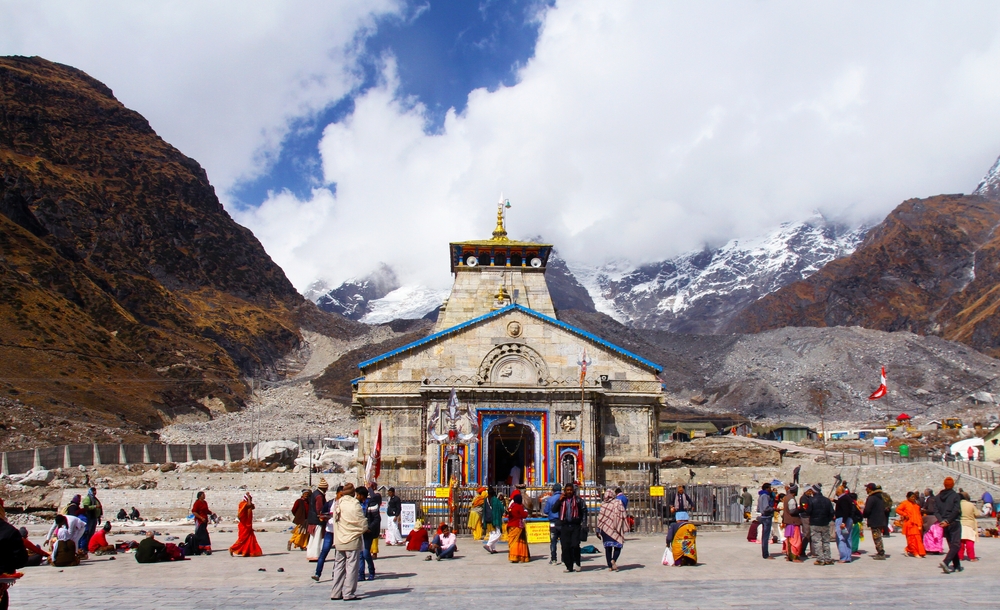
Kedarnath Temple, nestled in the heart of the majestic Himalayas, is one of the most revered and sacred temples in India. This ancient shrine draws thousands of devotees and tourists every year, seeking divine blessings and spiritual solace. But which deity is worshiped in the Kedarnath Temple? Let us delve into the rich history, mythology, and significance of the deity worshiped at this holy site.
Historical Significance of Kedarnath Temple
The Kedarnath Temple is one of the twelve Jyotirlingas of Lord Shiva, making it one of the holiest Hindu shrines. It is believed to have been constructed by the Pandavas during the Mahabharata era and later rebuilt by Adi Shankaracharya in the 8th century. This ancient temple stands as a testament to the architectural brilliance and religious devotion of its creators.
Mythological Background
According to Hindu mythology, after the Kurukshetra war, the Pandavas sought Lord Shiva to absolve their sins. Lord Shiva, avoiding them, took refuge in Kedarnath by transforming into a bull. When the Pandavas recognized him, he dived into the ground, leaving behind his hump on the surface. This hump is worshiped in the Kedarnath Temple in the form of a Shiva Lingam.
Architectural Marvel
The Kedarnath Temple is constructed using large, evenly cut grey slabs of stones. Despite the harsh weather conditions and natural disasters, the temple has stood firm for centuries. Its walls are adorned with intricate carvings of deities, scenes from Hindu mythology, and various symbols of spirituality. The temple’s inner sanctum houses the primary deity, Lord Shiva, in the form of a hump-shaped Shiva Lingam.
Rituals and Festivities
Devotees from all over the world visit the Kedarnath Temple to participate in its daily rituals and annual festivals. The temple rituals begin early in the morning with the Abhishekam (ritualistic bath) of the Shiva Lingam, followed by the Aarti and offerings of flowers, fruits, and other sacred items. The most significant festival celebrated here is the Kedarnath Yatra, part of the larger Chota Char Dham Yatra, attracting millions of pilgrims each year.
The Spiritual Journey to Kedarnath
Undertaking the pilgrimage to Kedarnath is considered an act of immense spiritual merit. The journey to the temple involves a trek through picturesque landscapes, rugged terrains, and breathtaking views of the Himalayas. Pilgrims often describe this journey as a transformative experience, filled with challenges and divine encounters.
Significance of Kedarnath in Hinduism
Kedarnath holds a paramount position in Hinduism due to its association with Lord Shiva, one of the principal deities in the Hindu pantheon. Lord Shiva, known as the Destroyer and Transformer, represents the cycle of creation, preservation, and destruction. Worshiping Lord Shiva at Kedarnath is believed to cleanse devotees of their sins and grant them Moksha (liberation from the cycle of life and death).
Legends Surrounding Kedarnath
Several legends add to the mystical aura of Kedarnath. One such legend speaks of Nara and Narayana, two incarnations of Lord Vishnu, who meditated at the site where Kedarnath stands today. Pleased with their devotion, Lord Shiva appeared and granted their wish to reside there as a Jyotirlinga. This story highlights the temple’s significance as a place of divine presence and spiritual power.
The Resilience of Kedarnath Temple
The Kedarnath Temple has witnessed numerous natural calamities, including the devastating floods of 2013. Despite the extensive damage to the surrounding areas, the temple miraculously withstood the disaster, reinforcing the faith of millions in its divine protection. This resilience is often attributed to the divine powers of Lord Shiva and the sanctity of the temple.
Modern-Day Kedarnath
In recent years, efforts have been made to restore and preserve the Kedarnath Temple and its surroundings. The government and various organizations have undertaken extensive reconstruction projects to ensure the safety and convenience of pilgrims. Modern amenities, improved infrastructure, and enhanced security measures have made the pilgrimage more accessible while maintaining the temple’s spiritual essence.
How to Reach Kedarnath Temple
Reaching Kedarnath involves a combination of travel modes. The nearest airport is Jolly Grant Airport in Dehradun, and the closest railway station is Rishikesh. From these points, one can take a road journey to Gaurikund, the base camp for the trek to Kedarnath. The trek spans approximately 16 kilometers and can be covered on foot, by pony, or via helicopter services during the pilgrimage season.
Accommodation and Facilities
Various accommodation options are available for pilgrims, ranging from basic lodges to more comfortable hotels. These facilities ensure that devotees have a place to rest and recuperate after the arduous journey. Additionally, numerous food stalls and eateries provide nutritious meals to sustain pilgrims during their stay.
Conclusion
The Kedarnath Temple, with its profound historical, mythological, and spiritual significance, stands as a beacon of faith and devotion. The deity worshiped here, Lord Shiva, embodies the essence of divine power and benevolence. A pilgrimage to Kedarnath is not merely a religious journey but a quest for spiritual enlightenment and inner peace.


